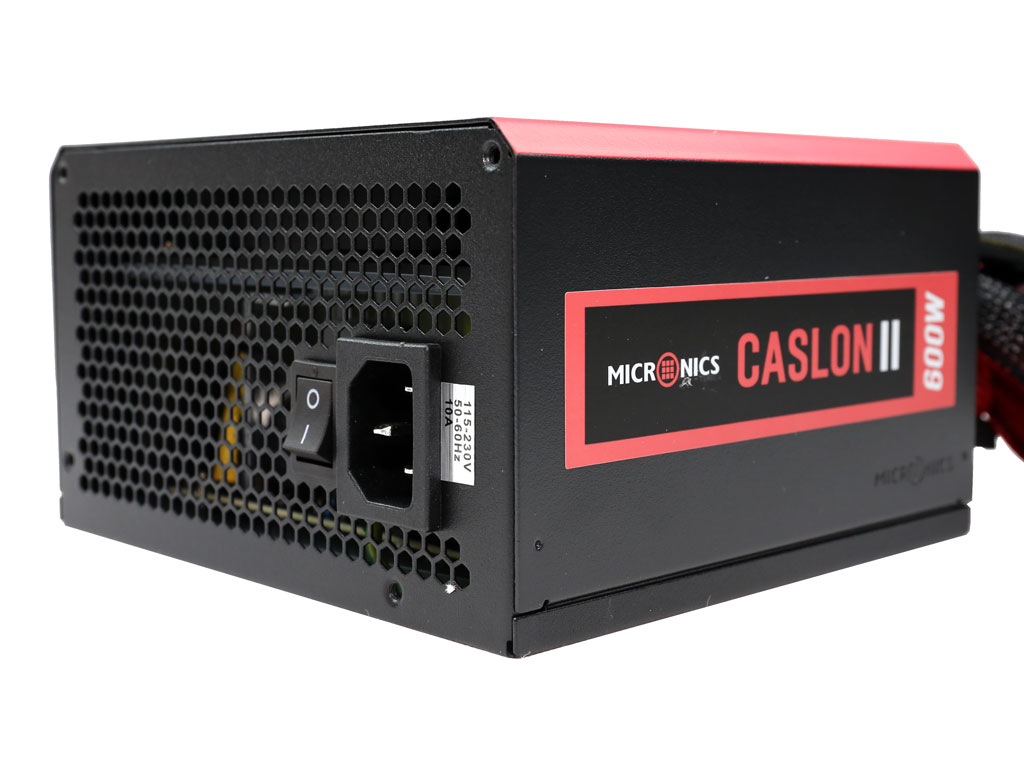Micronics Caslon II 600W PSU Review: A Low-Cost Gem?
Why you can trust Tom's Hardware
Final Analysis
Micronics, a brand that we weren't familiar with before now, chose to enter the U.S. market with its affordable Caslon II PSU family. All of the corresponding models are based on an old High Power platform equipped with Micronics' special controller that offers zero-wattage functionality an an after-cooling mode, which keeps the fan spinning after shutting down.
Performance-wise the 600W Caslon II is nothing to write home about. It merely performs as expected given its outdated platform. Inside, the build quality is satisfactory. And although the Teapo SC caps are not among our favorites, they're preferred over most Chinese capacitors. It was also a great surprise to encounter a true fluid dynamic bearing-based fan inside such an inexpensive PSU.
In our opinion, it's not wise to spend money on low-efficiency PSUs these days, even if you're able to score a real deal. At $63, the 600W Caslon II looks like a veritable bargain. If you're willing to pay about $20 more, though, you can get a quieter, more efficient power supply with modular cables. It this model was selling for ~$50, we'd call the difference more substantial. But we doubt Micronics would be willing to shave that much off of its asking price. Of course, the company could always replace its FDB fan with a cheaper sleeve bearing-based one, saving a few dollars in manufacturing cost. Given a three-year warranty, the Caslon II would easily be able to survive long enough.
The zero-wattage mode looks interesting. But we expected something more innovative and not just a remotely-controlled power switch. We know, we know: don't ask so much from a budget-oriented PSU. However, it's one thing to limit vampire power in general and another to remove the 5VSB rail altogether. There is a reason that rail exists. Micronics' second differentiating feature is its delayed fan operation, which exhausts residual heat even after your PC is turned off. This feature is more important, especially in low-efficiency PSUs suffering higher thermal loads.
Micronics made the right call to introduce an inexpensive PSU family to the U.S. market. It needed a more advanced platform with DC-DC converters though, rather than a group regulated scheme. While we can live with the Caslon II's native cables, we're more bothered by the old design's issues with over-power protection. After all, we killed one sample during the protection feature testing. The weak link proved to be the bridge rectifier, which apparently could not cope with the load we applied. As a result, Micronics should instruct High Power to lower this PSU's OPP limit.
MORE: Best Power Supplies
MORE: How We Test Power Supplies
Get Tom's Hardware's best news and in-depth reviews, straight to your inbox.
MORE: All Power Supply Content
Disclaimer: Aris Mpitziopoulos is Tom's Hardware's PSU reviewer. He is also the Chief Testing Engineer of Cybenetics, and developed the Cybenetics certification methodologies apart from his role on Tom's Hardware. Neither Tom's Hardware nor its parent company, Purch Media, are financially involved with Cybenetics. Aris does not perform the actual certifications for Cybenetics.
Current page: Final Analysis
Prev Page Performance, Value, Noise & Efficiency
Aris Mpitziopoulos is a contributing editor at Tom's Hardware, covering PSUs.
-
nobspls Why would anyone choose this one say over the Corsair CX650M? Which you can get typically for $50.Reply -
spentshells " Not only does this minimize your carbon footprint"Reply
The idea of conserving electricity is a fallacy, if you use less the people selling can sell more to someone else..... they aren't just holding on to the energy you saved because you're a hero saving the world.
Making your footprint smaller doesn't matter in the least when someone else's foot print just gets that much bigger.
Save some money, sure but for how long? The less you use the more they can charge for that smaller amount later on..... that's how it is.
On a different note, Ill likely try the psu out at one point on a build for someone else. -
rohs42 > The idea of conserving electricity is a fallacyReply
No it isn't. Of course a 100 megawatt generator will not be turned off if someone saves 10 watts of power. But if a 10 million people save 10 watts of power, then of course it will be turned off. And if 100 million people save 10 watts, then there'll be no business case for that new gigawatt power plant.
As citizens, consumers and voters we all bear a small share of responsibility for the state of the world, and we all have a small part to play in making it better. It's only through working together that humanity improves. Your appeal to helplessness and apathy is pathetic. -
jabliese Hey Tom's,Reply
Once upon a time, we had an extensive brown out at work, which went on for 3 days. On day 2, I was surprised to find many of the PC's that were still working were on 60v power. Over the years, it did not seem to have a adverse affect on any of the power supplies. Lately, I have been wondering what their efficiency numbers looked like during that time, any chance you could add a severe undervolt test to the power supply suite? -
Aris_Mp 60V is too low. Most PSUs won't even work at such low voltage. I am surprised to hear that the PSUs at your work were working under such conditions for days.Reply
Efficiency drops along with voltage input. I want to add more protection tests, however I already have enough fails with the current ones. Nonetheless, I am keeping every suggestion under consideration.
